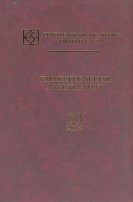Fraseologism versus kõnekäänd
Phraseological unit versus saying
Author(s): Katre ÕimSubject(s): Language and Literature Studies
Published by: Eesti Teaduste Akadeemia Kirjastus
Keywords: lexicon; phraseological unit; paroemia; database
Summary/Abstract: The syntactic structure and lexical composition of the Estonian phraseological units are characterized by relative freedom and openness to various changes. Accordingly, when systematizing this kind of material one has to consider the possibility that in everyday usage one or another string of expression could be continued without causing any difficulty in understanding the expression. On the other hand, phraseological units reveal various grammatical and lexical constraints. Importantly, both of these features can often be explained / substantiated by the nature of the Estonian language. Such expressions can be regarded as linguistic phenomena also for the reason that by definition sayings belonging to the folkloric type should have a much stabler and uniform composition than sayings with their almost non-fixable boundaries. Instead of regarding specific archival data as potential types of sayings and their so-called final variants, one could regard it as accidentally fixed figurative speech with a certain degree of stability, which enables us to reach some conclusions and to make some generalizations about Estonian phraseological units and their variations.
Journal: Emakeele Seltsi aastaraamat
- Issue Year: 2004
- Issue No: 50
- Page Range: 129-142
- Page Count: 13
- Language: Estonian

